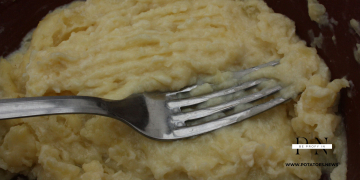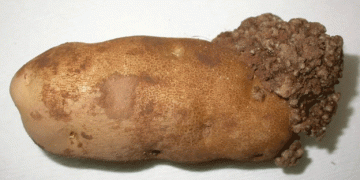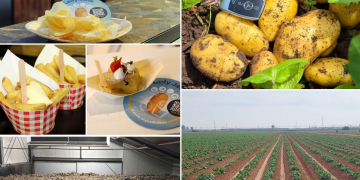Last week, Brazil’s potato market faced a sharp decline in prices, presenting significant challenges for the agricultural sector. The average wholesale price of “Agata” potatoes fell to BRL 50.13 per 25 kg sack (USD 10.00) in São Paulo, marking a 22.88% drop from the previous week. Similar trends were observed in Belo Horizonte (BRL 50.45, down 15.92%) and Rio de Janeiro (BRL 43.07, down 21.69%). These price reductions, despite the holiday season, are largely attributed to an oversupply in the market.
The Oversupply Problem
The recent intensification of the water harvest in key producing regions like Guarapuava (PR) and Água Doce/Palmas (SC) has resulted in high yields of high-quality potatoes. Additionally, harvesting activities in Minas Gerais (Cerrado Mineiro and South Minas Gerais) have further increased supply, creating downward pressure on prices. According to recent data, these regions are producing at record efficiency levels, exacerbating the oversupply issue.
Regional Market Implications
The low prices, combined with the devaluation of the Brazilian real, have made Brazilian potatoes highly competitive in regional markets, particularly in Argentina and Uruguay. However, this competitiveness comes at a cost. In Uruguay, the influx of contraband potatoes from Brazil is becoming increasingly evident, potentially undermining local producers.
Future Projections
There is potential for a slight market correction in the coming weeks as the harvest in Paraná nears completion, possibly reducing the volume of potatoes entering the market. However, the broader issue of balancing supply with demand remains a pressing concern for Brazilian farmers. Strategies such as diversifying export markets and investing in storage facilities to regulate supply could help stabilize prices in the long term.
Brazil’s potato price crisis underscores the importance of managing supply chain dynamics and exploring new market opportunities. For farmers, agronomists, and policymakers, addressing these challenges will require coordinated efforts, including better market intelligence, improved infrastructure, and stronger regional trade agreements. With proactive measures, the sector can better weather future market fluctuations and secure sustainable growth.






